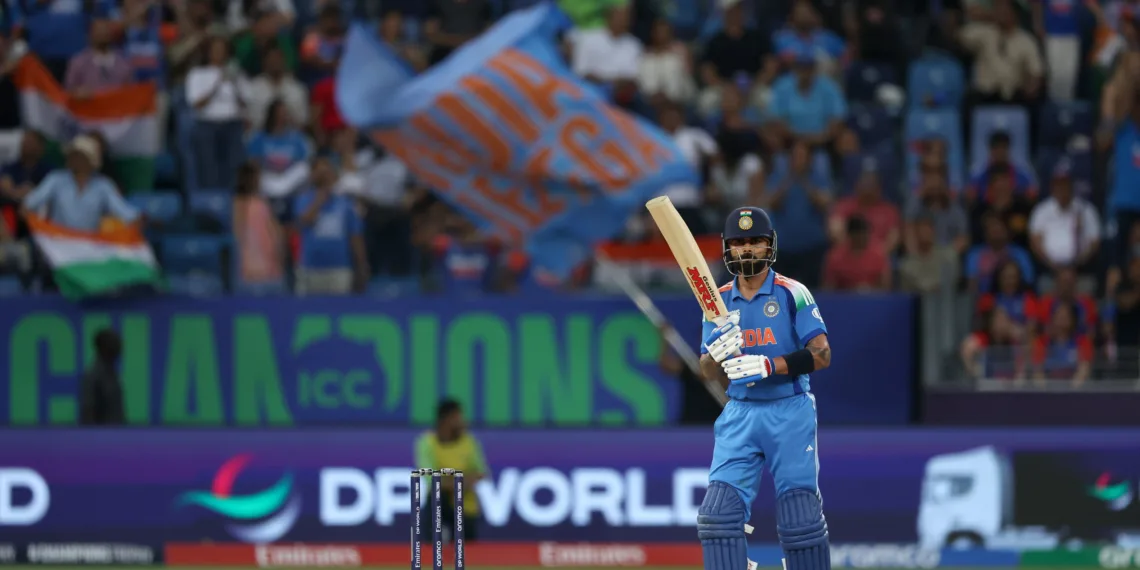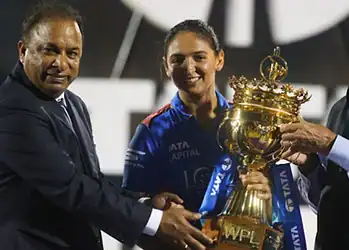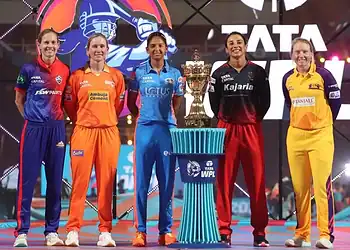In the year’s most anticipated clash, with signs of wear showing more than before, Virat Kohli proved he’s still got it. Perhaps, just perhaps, the little he’s lost won’t define him.
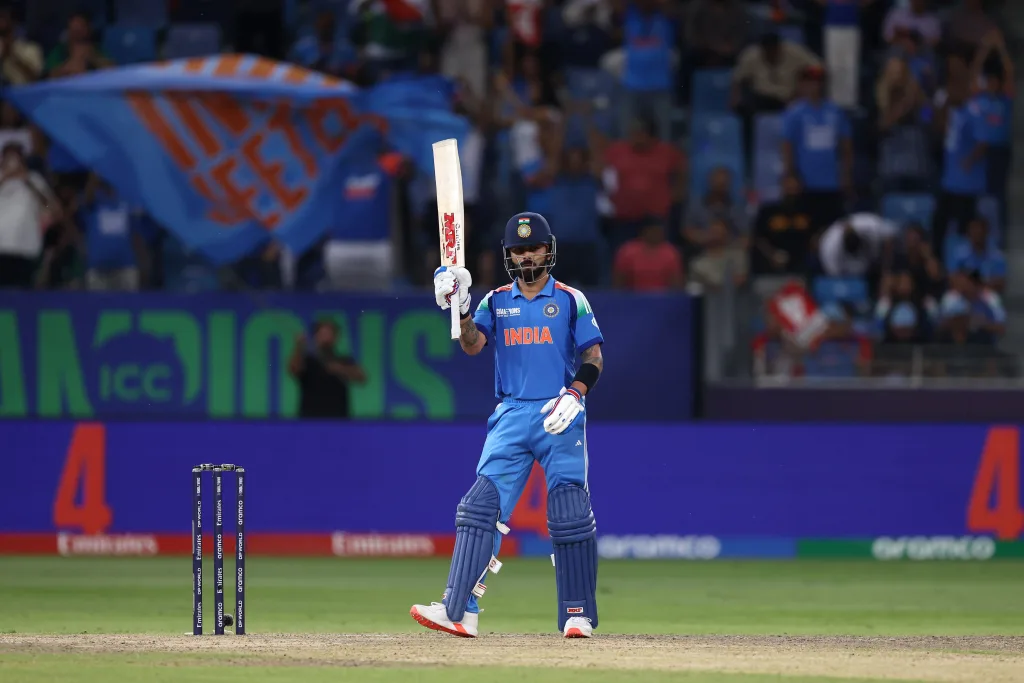
He reached the 14,000-run milestone in ODIs, notched up his 51st century, propelled India towards a semi-final berth, and virtually ended Pakistan’s hopes for the 2025 Champions Trophy. The defending champions and hosts now rely on other results to stay alive.
Table of Contents
Pakistan’s Missed Opportunities Turn Rivalry Clash Into a One-Sided Affair
India entered the game as favourites and justified that tag by restricting Pakistan to 241. Hardik Pandya delivered a performance so impactful it felt almost unfair—dismissing Pakistan’s best batter and later removing their top-scorer. He wasn’t just a name on the team sheet; he was the secret ingredient.
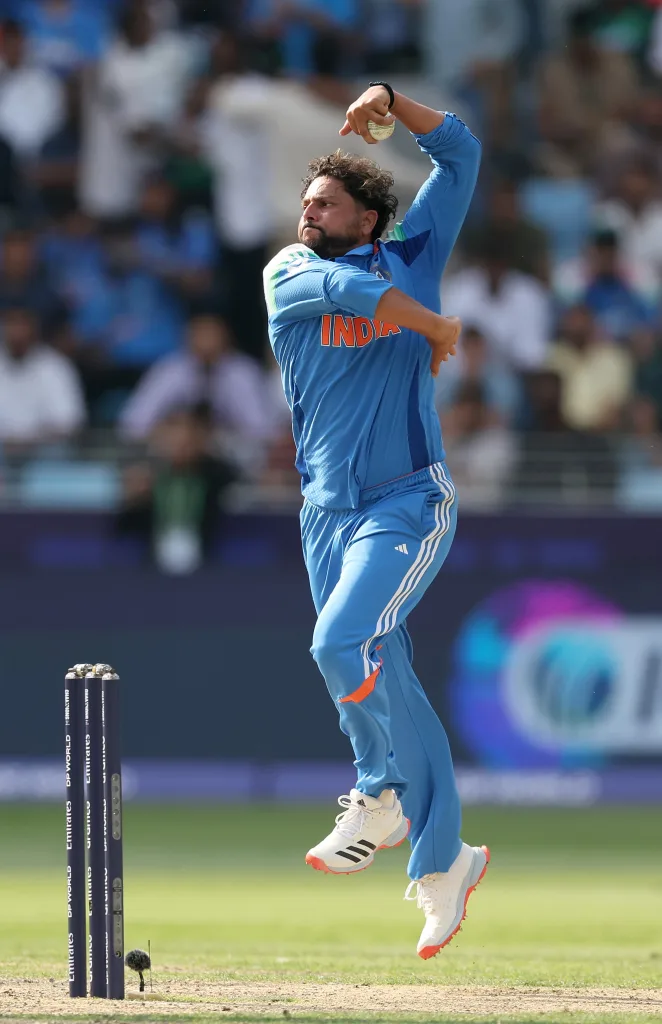
Kuldeep Yadav added the spice. His left-arm wrist spin, already rare, became even trickier as he bowled with added pace without sacrificing turn or precision. Batters who couldn’t read him from the hand were left guessing—and three guessed wrong during the death overs. Pakistan had planned a late-innings surge, but Kuldeep wouldn’t allow it. Injury or not, his threat remains undiminished.
Pakistan had their moments. Shaheen Shah Afridi sent down a blistering 143 kph inswinging yorker to dismantle Rohit Sharma’s stumps. Abrar Ahmed produced a wicked carrom ball to halt a rampaging Shubman Gill. Yet, when it came to capitalizing on these breakthroughs, they faltered. Once renowned for snatching victories from precarious positions, Pakistan now seems adept at getting into trouble but incapable of escaping it. From a promising 151 for 2 in the 34th over, they crumbled to 241 all out. The catalyst? Harshit Rana—the least experienced member of India’s squad—whose deceptive slower deliveries proved unplayable.
What began as an intense ICC tournament clash, brimming with historic rivalry, ended so one-sided that the final moments were about an individual milestone. With just 12 runs needed for India’s win—and Kohli’s century—Axar Patel declined an easy two to give Kohli the strike. The Dubai crowd erupted, chanting Kohli’s name in unison. Pakistan, meanwhile, had faded out of the contest ever since their dramatic collapse of 3 for 11 in just 19 balls.
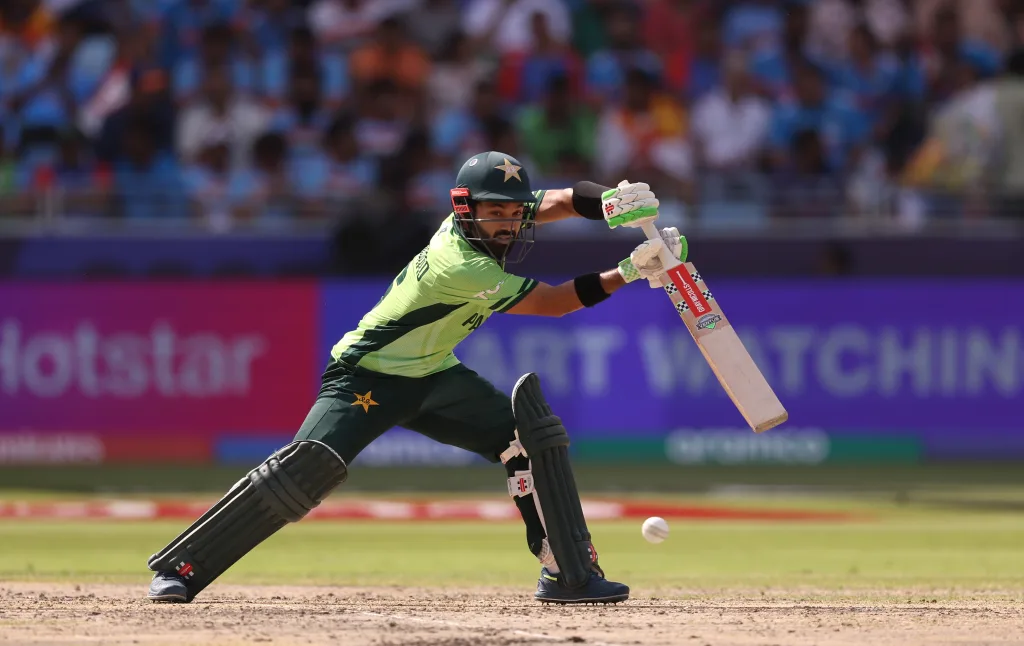
Mohammad Rizwan had envisioned a different script. Walking in at 47 for 2, he struck his first ball for four but soon adopted an ultra-cautious approach—scoring 24 off 50 deliveries and refusing to accelerate. At the other end, Saud Shakeel showed more intent, converting good balls into singles and reaching his fifty with only 29 dot balls faced. Rizwan, by contrast, had accumulated 40 dots.
India’s strategy to deny him spin early worked perfectly, but Rizwan’s cautiousness seemed excessive, especially on a pitch offering more pace under lights. His eventual attempt to break free backfired—Axar dismissed him, triggering a collapse. Shakeel fell the next over, followed swiftly by Tayyab Tahir. After searching for middle-overs wickets for 320 deliveries over two matches, India suddenly claimed three in four overs. Pakistan slumped to 165 for 5 and later 200 for 7, forced to navigate the final overs with a vulnerable tail.
Hardik’s Brilliance and India’s Discipline Leave Pakistan Struggling
India’s unwavering discipline never allowed Pakistan to settle, with Hardik Pandya leading the charge. Exploiting the pitch’s slight grip and tennis-ball bounce, he persistently hit a nagging short-of-length area. His standout moment came when he removed Babar Azam with a delivery that nipped away after pitching—particularly crucial with lead pacer Mohammed Shami off the field nursing a shin issue. Hardik’s mastery didn’t stop there; just after being struck for four by Saud Shakeel, he foxed the left-hander with a slower ball, showcasing his knack for reading conditions and making life difficult for batters. Building on Hardik’s groundwork, Kuldeep Yadav and Harshit Rana bowled 6.4 overs at the death, conceding just 28 runs while claiming four wickets.
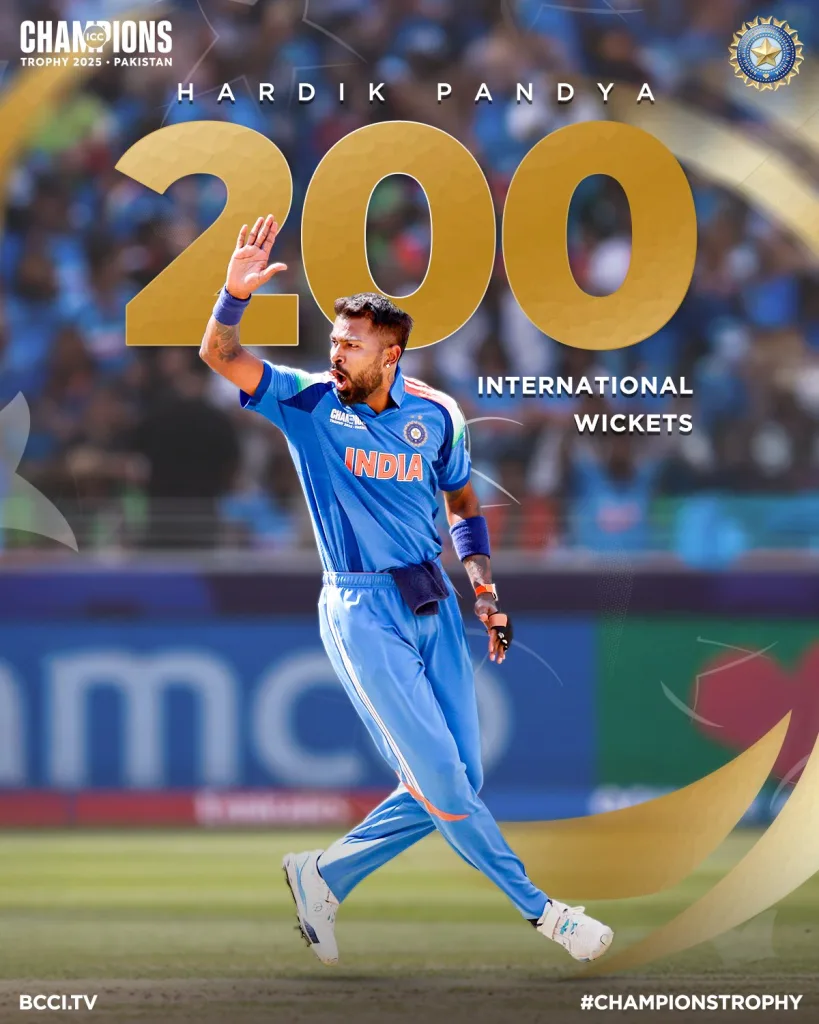
Shubman Gill shone in the early stages of India’s chase, employing a conscious effort to limit his front-foot movement. This adjustment left him perfectly positioned to capitalize on Shaheen Shah Afridi’s full-length deliveries, especially when there was no swing. Gill’s confidence peaked when he drove Afridi straight down the ground before advancing down the track to launch one into the sightscreen, hinting at a match-defining innings. However, Abrar Ahmed had other ideas. He delivered a drifting ball that tempted Gill into closing the face of his bat, only for it to turn away and crash into middle and off stump—leaving the opener stunned.
Vintage Kohli Shines as Pakistan Struggles for Answers
Virat Kohli, despite showing brief vulnerability against Abrar Ahmed—nearly getting bowled playing back—was vintage against Pakistan’s quicks. He reached the 14,000-run milestone in ODIs with a trademark cover drive off Haris Rauf, thriving on the pace offered by Pakistan’s best bowlers. Kohli’s preference for pace was evident, and while Pakistan had a legspinner—a type that had dismissed him five times in his last six ODIs—they chose not to use him, allowing Kohli to settle.
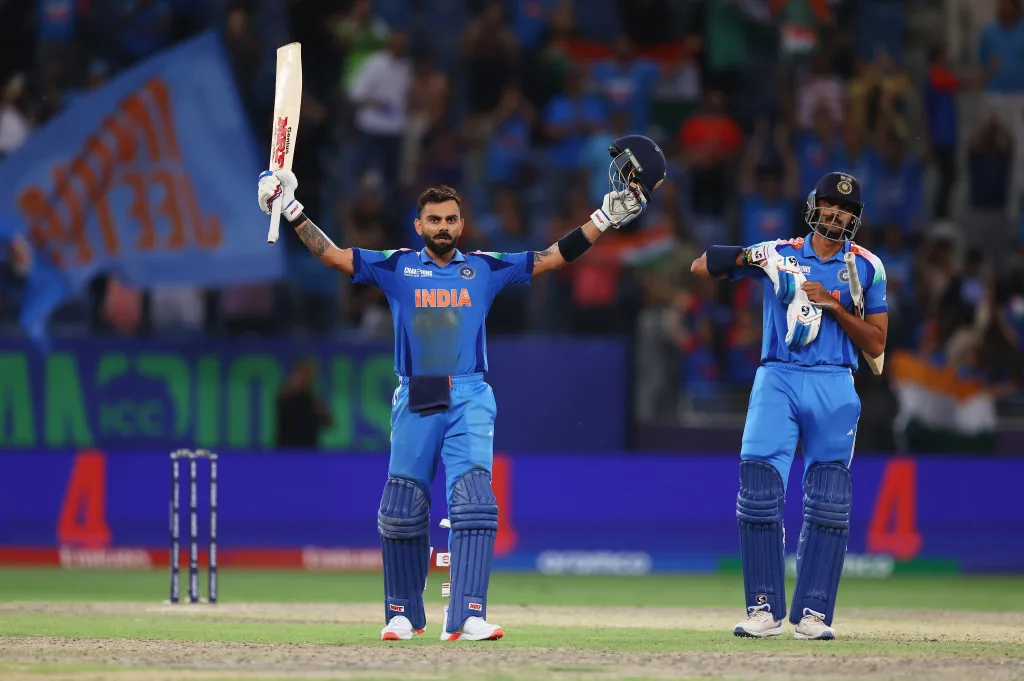
Shreyas Iyer, meanwhile, contributed a valuable half-century. A subtle tweak in his technique—holding the bat higher and creating momentum into his shots—has improved his response to short-pitched bowling. His authoritative front-of-square boundary off Rauf highlighted that progress. Yet, no one could overshadow Kohli.
Setting the tempo from the outset, Kohli demonstrated his knack for accumulating runs without relying on boundaries—scoring fifty runs with just three boundaries in his first 62 balls. As the ball skidded under the lights, everything began to align for him. His hunger for a century was palpable, even demanding an explanation from Axar Patel when a second run was turned down in the 42nd over—an obvious attempt to give Kohli the best chance at his hundred. And he delivered. Reaching his century off the final ball of the match, Kohli turned to the dressing room, smiled, and mouthed, “I told you. Relax.” It was a statement of inevitability—this was his stage, and he owned it.
FAQs
How did Virat Kohli perform against Pakistan in the match?
Virat Kohli scored an unbeaten century, reaching his 51st ODI hundred and surpassing 14,000 ODI runs, leading India to a dominant win over Pakistan.
What was the turning point of the India vs Pakistan match?
Kuldeep Yadav’s three crucial wickets in the death overs and Hardik Pandya’s all-round brilliance shifted the momentum firmly in India’s favor.
How did Pakistan’s batting collapse unfold?
After being 151/2 in the 34th over, Pakistan collapsed to 241 all out, triggered by Mohammad Rizwan’s slow innings and consecutive middle-order wickets.
Who starred for India with the ball against Pakistan?
Hardik Pandya, with timely breakthroughs, and Kuldeep Yadav, with three death-over wickets, were key to restricting Pakistan’s total.
How did Shubman Gill and Shreyas Iyer contribute to India’s chase?
Shubman Gill provided an aggressive start before being dismissed by a carrom ball, while Shreyas Iyer’s half-century ensured stability in India’s chase.

